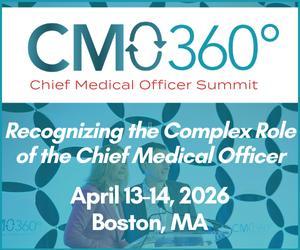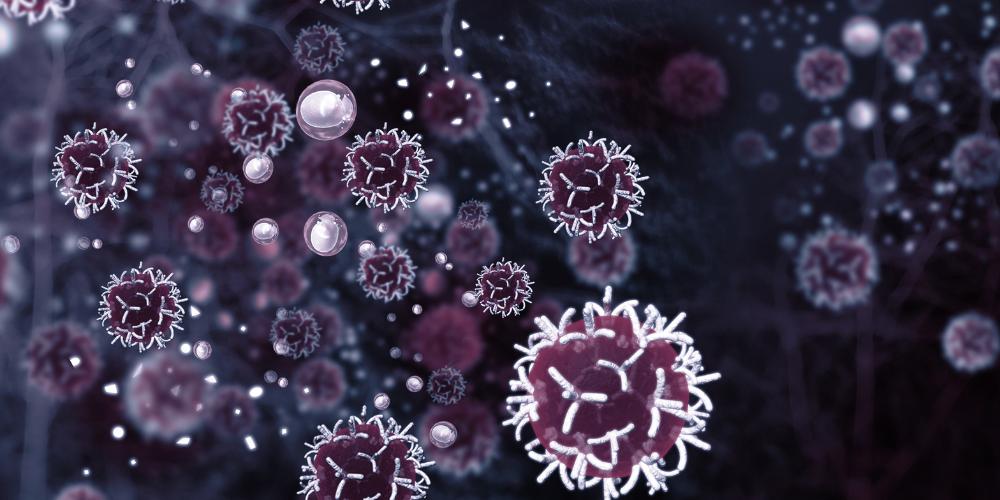
What is your research in immunotherapy and immuno-oncology?
I am investigating characteristics of patients’ immune systems and trying to understand how these immune system characteristics predict how patient may respond to immunotherapy treatments. Based on analysis of clinical samples collected prior to their immunotherapy treatment, we were able to discover a biomarker in the peripheral blood of patients that could tell us how patients would do on immunotherapy.
In a recent paper published in Science Translational Medicine, we described patients who had similar immune characteristics as having a particular “immunotype.” We don’t fully understand the impact of these immunotypes, but we do know that patients with one immunotype do better with checkpoint blockade and patients with another immunotype do worse. With this information, we hope to prospectively identify a pateints’ immunotype and predict clinical outcomes based on this information.
"We hope that ‘immunotype’ could eventually guide treatment decisions for patients, selecting particular immunotherapy regimens or combinations that would be the most favorable."
What’s next for your work with immunotypes?
We are still trying to understand what the immunotypes are indicative of. One cancer immunotherapy in wide clinical use now are anti-PD-1 antibodies such as nivolumab and pembrolizumab. We know that certain immunotypes are a predictor for PD-1 sensitivity. We’re waiting for data to mature in order to understand whether the immunotype we’ve identified is a sensitivity predictor for PD-1/CTLA-4 combinations or other immunotherapies.
What is the ultimate goal?
The ultimate goal is to learn more about the underlying biology and use that greater understanding to refine and improve the test to improve treatment options for patients. We hope that ‘immunotype’ could eventually guide treatment decisions for patients, selecting particular immunotherapy regimens or combinations that would be the most favorable.
Picture a clinically practical commercial test that your oncologist would do before you get treated that would say “You're a candidate for immunotherapy, and this is the one you should get,” or “This is the other therapy you should get, based on the characteristics of your immune system.”
"If you had immunotherapy working in patients, how could you not want to study it directly if you were a clinician?"
What was your earliest involvement in the IO space?
During my time as a graduate student, it seemed that cancer immunotherapy was a great theory, but might never translate to the clinic. However, I began my fellowship just as CTLA-4 was getting approved, and the PD-1 checkpoint antibodies were in development. Suddenly, what had been a preclinical interest in immunotherapy became a very translatable clinical interest. If you had immunotherapy working in patients, how could you not want to study it directly if you were a clinician?
What was the turning point you saw that changed immunotherapy from theory to reality?
I spent my fellowship collecting samples from patients to potentially identify a biomarker or gain some understanding of the immune system. By the end of my fellowship, we had some interesting findings but were far away from saying that we were rigorously identifying a predictive biomarker.
I spent the next several years accumulating patient samples and working with colleagues in biostatistics to develop a discovery algorithm that would take in all the information we collected in an unbiased way to identify a signal that connects to survival.
Then, about 4-5 years ago, we had a crystalizing moment that we describe in our Science Translational Medicine paper. We took all the immune parameters we could detect by flow cytometry and you could see clearly in the heat map that there were three groups of patients, solely categorized by characteristics of the immune system. It turns out those categories meant a lot for predicting clinical outcomes and gave us hope that we’d be able to learn something about patients by looking at peripheral blood.
What were those three groups and how did they respond to immunotherapy?
Group #1 was what we called the LAG-positive immunotype and characterized by a population of cells that expressed LAG-3 on the cell surface, and then a relatively low representation of the other activation markers that we were looking at. Group #2 was mostly quiet in terms of peripheral blood cells with activation markers expressed on them. Group #3 had a high number of proliferating cells, a high number of cells expressing activation markers and regulatory markers, and they were “pan positive.”
Group #1 – the LAG-positive group – did very poorly after treatment with immune checkpoint blockade. Group #2 – the relatively quiet group – did very well after receiving the same treatment. Group #3 – the pan-positive also did poorly – but was more intermediate.
What did that data confirm for you?
Using the peripheral blood actually helped us to see whether or not there would be a response to immune checkpoint blockade, something which we wouldn’t have known if we had just looked at TMB or PD-L1 status.
Group #1 and Group #2, LAG-positive and LAG-negative respectively, had nothing in the clinical variables we investigated that would’ve allowed us to distinguish clinical outcomes. They were relatively matched for M stage, liver mets, LDH etc. The PD-L1 or TMB status didn’t give us the full picture either. The flow data from the peripheral blood actually added something we wouldn’t have known otherwise.
What are we learning about the immune system at this current moment?
I think we are really understanding that the immune system is a system, with regulatory feedback loops. That means that as soon as you push things in one direction, the system is going to push back in a different way. There will never be just one answer, because of the complexity of the system. We won’t ever discover that the answer is “Hit this one marker as hard as you can.”
Maintaining that wider view of the immune system will be key. At this point, we are still pulling the strings a little blindly; we’re learning. But we have the opportunity as we pull these strings to ask, “How is the system being perturbed in ways we would have predicted, and in ways that we would not have predicted?” That helps us understand how the entire system works to refine our future approaches.
"We are really understanding that the immune system is a system, with regulatory feedback loops. That means that as soon as you push things in one direction, the system is going to push back in a different way."
Do you have any final thoughts about the IO space for our readers?
We are learning more about the complexity of the system. We still need to be cautious and critical with any new data. One of the hazards of the field is over-exuberance for any small success and pessimism in the face of any disappointment. We need to keep our heads on and be critical evaluators of new data, and remember that the immune system’s complexity is our biggest challenge and our greatest opportunity. The potential is there, and it’s about how we can reliably manipulate the system to deliver the greatest benefit to patients.










